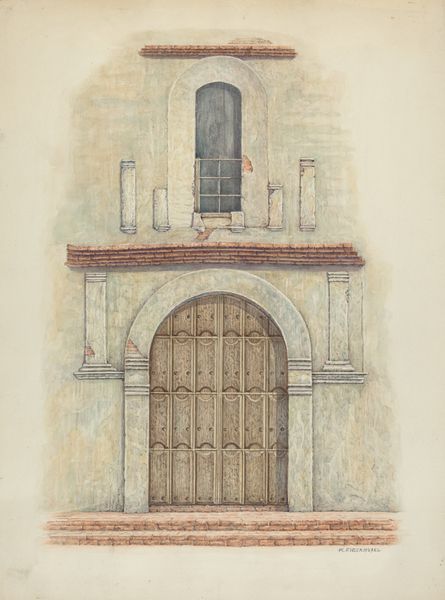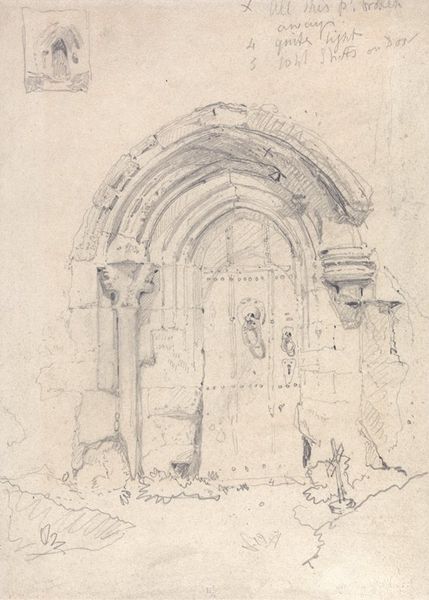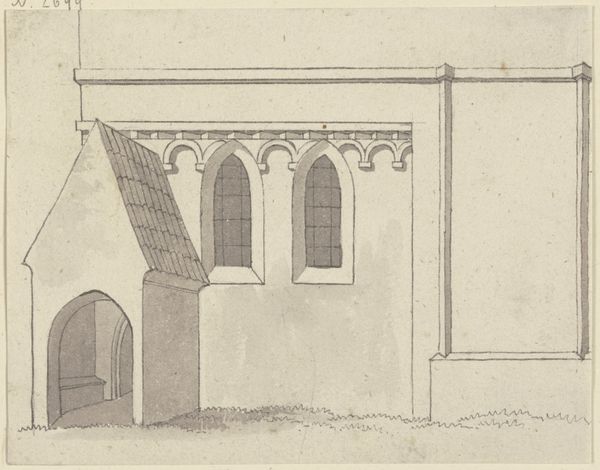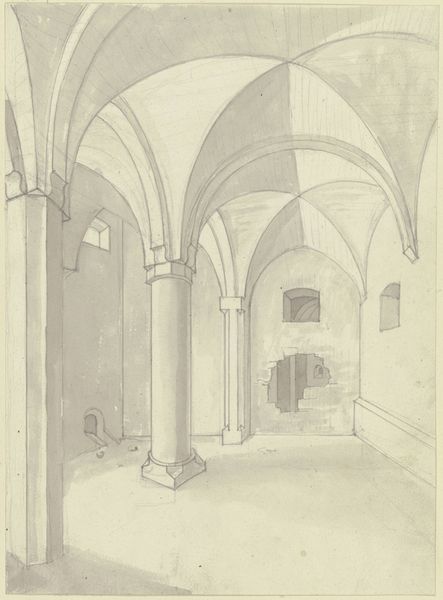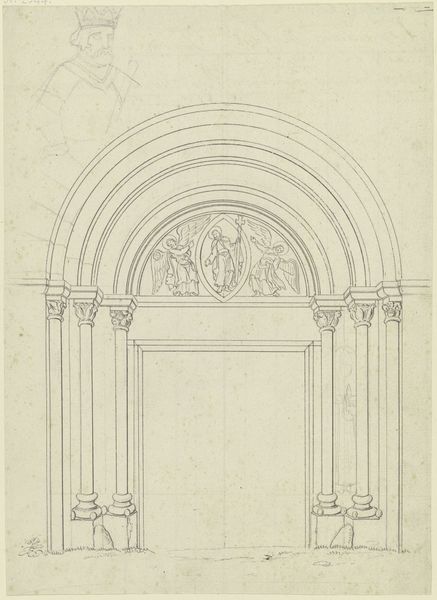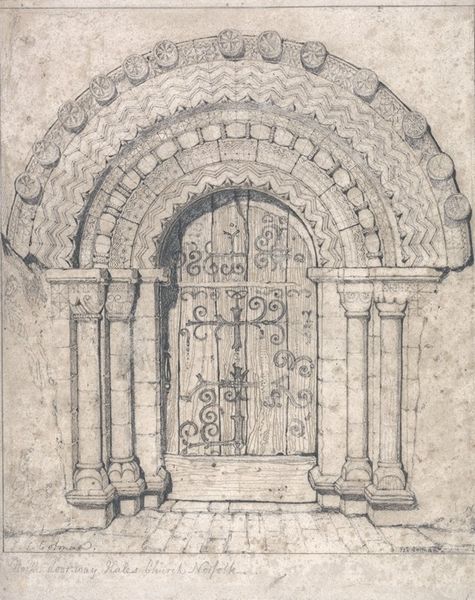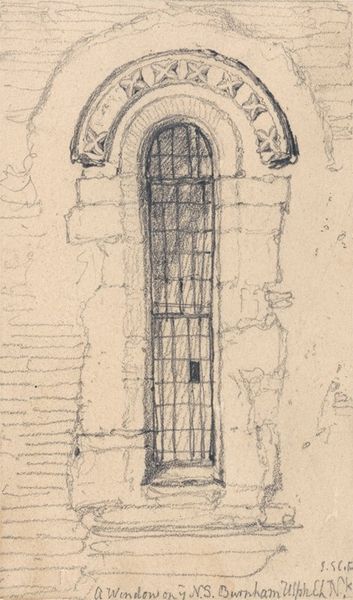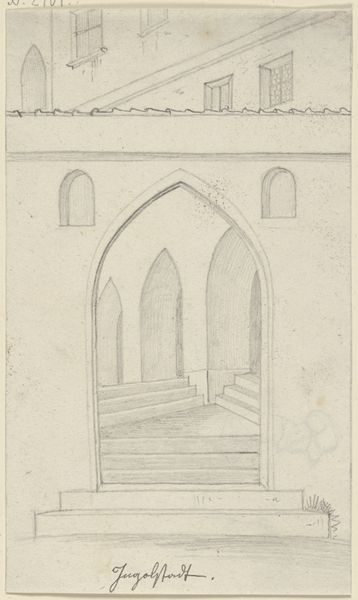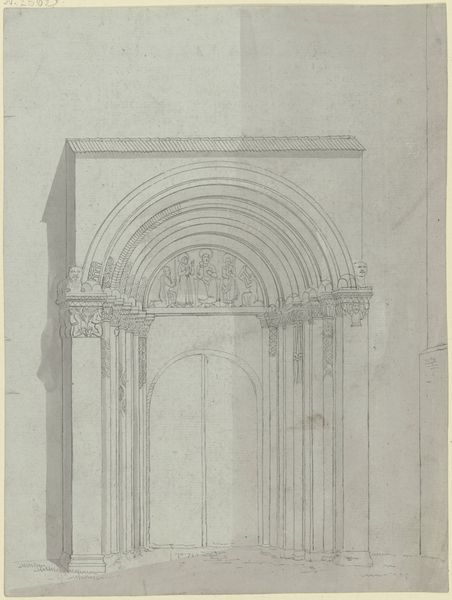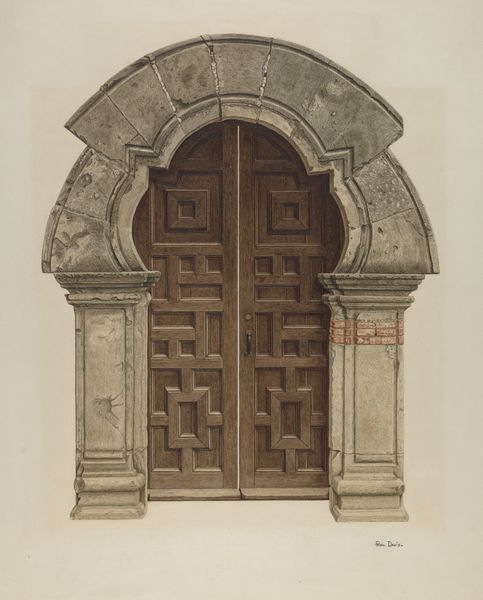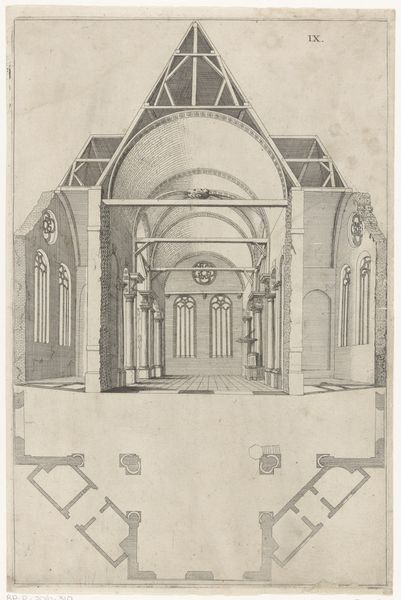
drawing, paper, pencil, architecture
drawing
landscape
paper
romanticism
pencil
architecture
Copyright: Public Domain: Artvee
Curator: This delicate drawing, executed in pencil on paper, captures the West Doorway and Window in the Church of Ham near Valognes, Normandy. John Sell Cotman created this piece in 1818. Editor: My initial impression is one of serene decay. There's a quiet, almost melancholy beauty in the artist's rendering of this aged architecture. The restrained palette enhances that feeling. Curator: Indeed. Cotman’s acute sensitivity to line and form transforms this architectural study into something far more profound. Note the meticulously rendered textures, achieved solely with pencil strokes. He has created depth with just the thinnest layer of pigment. Editor: What intrigues me is how the architecture, though clearly the subject, is depicted within a specific socio-cultural framework. The drawing romanticizes this structure, evoking a nostalgia for a vanishing past in the face of social disruption. It's almost as if the Church itself becomes a silent observer to that disruption. Curator: I agree, the structure here embodies a past ideal, though let’s look closer. See how the window echoes the doorway below? This establishes a deliberate mirroring— a compositional strategy that unites these elements through repeated forms. It suggests an intellectual exercise beyond pure observation, a thoughtful orchestration of design. Editor: But isn’t that design imbued with the politics of imagery? Architectural preservation was becoming a prominent social endeavor around this time, influencing how structures like this were perceived and artistically depicted. Cotman wasn't merely drawing; he was participating in this public act of valuation, reinforcing particular cultural ideals tied to heritage and stability during that post-revolutionary period in Europe. Curator: Perhaps, yet his restraint speaks volumes too. The subdued palette, the focus on line—these elements communicate as powerfully as any overt political declaration. It transcends period. We can sense both timeless structure, and light on fading forms. Editor: An excellent point, because his stylistic choices—partake within a certain framework. Looking beyond just surface aesthetics compels us to ask: why depict these doorways this way, and how does such depiction reinforce or challenge then-contemporary understandings of community, the Church, and indeed the trajectory of history itself? Curator: Ultimately, what endures is Cotman’s ability to capture both the specific detail and the general atmosphere of this Norman church. This pencil drawing transcends its immediate historical setting, prompting questions that resonate with our current preoccupations of time and architecture. Editor: A very thoughtful overview, it is a fascinating artistic choice and certainly invites considerations of time and the impact that context has on creating meaning.
Comments
No comments
Be the first to comment and join the conversation on the ultimate creative platform.
